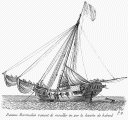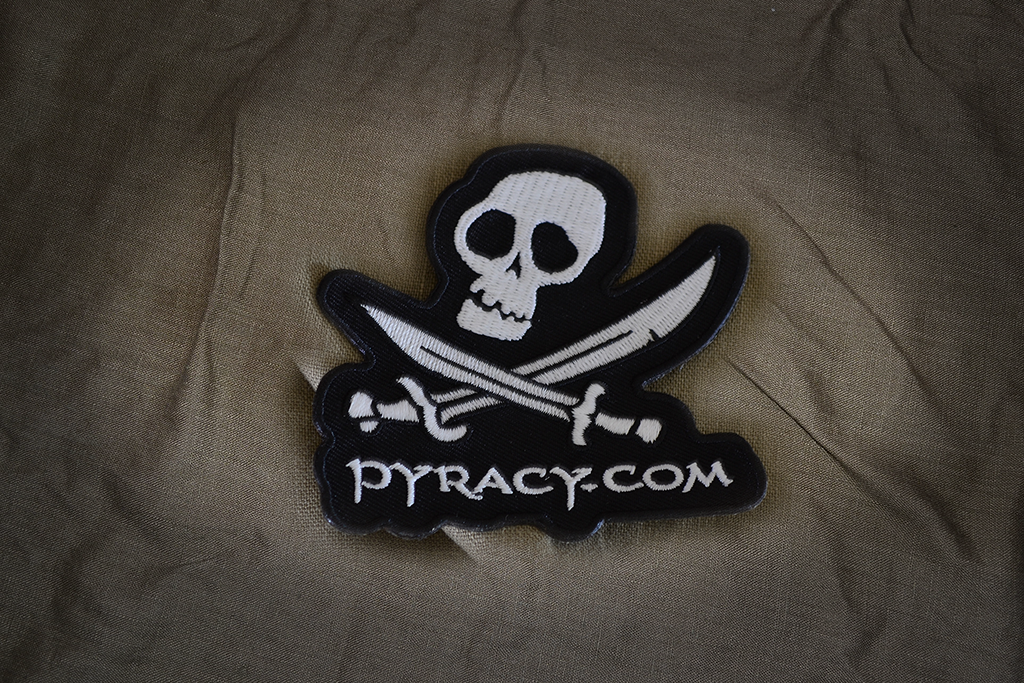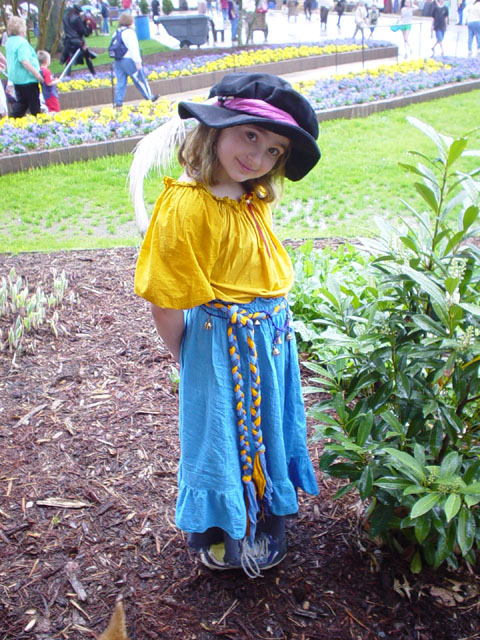Captain Twill
Academic Fight Circle, Research, Share, Discuss & Debate Maritime History.
1,566 topics in this forum
-
- 3 replies
- 974 views
I'm putting together my historically correct kit and was wondering everyone's opinion on the correct belt widths.... I have read through previous threads that seemed to frown upon thicker than 2" belts....The buckles should be period correct from the buckle threads I've seen here in the Capt. Twill fourm... Smiling Fox Forge has 2 adult sized belts and I was considering ordering one... 1st is a 2 1/8" Belt: https://www.dkiempire.com/Secure/smilingfox...ils3.asp?id=421 2nd is a 1 3/4" Belt: https://www.dkiempire.com/Secure/smilingfox...ils3.asp?id=422 OR should I get the 1 3/4" thick hanger belt (Kinda leaning towrads this one) so I could carry my cutlass without ha…
Last reply by Rats, -
- 6 replies
- 763 views
I was just wondering what everyone's favorite Pirate/Nautical paintings were. Personally there is just something about Howard Pyle's "Marooned" (1905) that just speaks to me....
 Last reply by BriarRose Kildare,
Last reply by BriarRose Kildare, -
- 17 replies
- 1.4k views
Period Literacy Now, lately I’ve been reading some statements around in various places, one of which is a thread on a related forum, about ‘literacy’ of the GAOP period. One of the statements I’ve seen several times uses the ability to sign one’s name as an indicator of literacy. I don’t buy that. I’ve known, in the present day, a number of people who could sign their names but were otherwise illiterate, and couldn’t read or write. One example: My acquaintance Jaybird, who works at a salvage yard. He is illiterate, but can sign his name. I’ve talked to him about his illiteracy at some length; how he functions, ‘writes’, etc (This came up, and he confided in me, due …
 Last reply by BriarRose Kildare,
Last reply by BriarRose Kildare, -
- 4 replies
- 566 views
I have found some very interesting things in researching my GAoP Character: A merchant turned "Privateer" in a Freeport in the Danish West Indies... Pictorial references for Danish Pirates are difficult to find. I would assume that they wore much the same kit at their English cousins, but with some regional accessories. I found this picture and couldn't help noticing some similarities to the common English sailor's kit The picture actually portrays a Danish man from the mid 1800's. A lot seems to have been retained from much earlier styling. So getting a basic GAoP kit together wasn't challenging enough... I want to be a Danish Pirate ta' boot... er, clog.
 Last reply by BriarRose Kildare,
Last reply by BriarRose Kildare, -
- 1 reply
- 566 views
Methinks today is becoming the GAOP: Mlaysia pirates
 Last reply by Rumba Rue,
Last reply by Rumba Rue, -
- 4 replies
- 1.8k views
Hullo list while doing some home work for some projects that I'm working on Actual sites on the west coast of florida that buccanees and pirates used as hide outs ect Davis Walker sent me a copy of a time line that he has been working on for Sealers Buccaneers for the back ground infor foe Sears rad in St Augusinetine... that made a refference to • In the fall of 1681, French buccaneers established themselves on Anclote Key, just south of Tampa Bay, three miles west off Tarpon Springs, to prey on shipping in the Gulf. Within six months, they had taken at least seven prizes, including a loaded supply frigate bound for St. Augustine. I have also foun…
 Last reply by capnwilliam,
Last reply by capnwilliam, -
- 3 replies
- 618 views
Permission to come aboard? I'm a college student in Rhode Island with an interest in pirates (one that predates PotC, thankyouverymuch). One wonderful thing about my school is that if one can write a well-researched (in this case, ten pages written in my blood and exhausted tears) syllabus and a mission statement, recruit a faculty sponsor and a group of interested students and push through two committees, one can create a class: thus was born the History of Piracy, which I arranged for next semester. This seemed like a good place to ask: does anyone know of good resources for fun-yet-piratically-historical activities around or in Providence, or of historians (or obses…
Last reply by MadRose, -
- 8 replies
- 1k views
It seems there's an awful lot of information online on how to remove blood stains, both genuine and theatrical (i almost said "man made" to a bunch of pirates...). However, i'm trying to do precisely the opposite. I'm trying to create realistic-looking "blood" stains on a few items of clothing. Because they're for reinactment purposes, and will be worn and washed over and over again, i'm looking for a method that will create stains that will look freshly old after laundering. Does that make any sense whatsoever? Thanks in advance for any and all advice.
Last reply by Themarko, -
- 14 replies
- 1.8k views
Somebody I was talking to today mentioned the Boston Subway system, and all I kept thinking was the name of a stop on the Red Line past Harvard Square. The word "Alewife" sounds so medieval or middle ages. Any history of this would be appreciated.
 Last reply by Matty Bottles,
Last reply by Matty Bottles, -
- 3 replies
- 490 views
The tidal mud is now an area known as the Battery. It was walled up, filled in and used as a gun battery. The area between the monument and the end of the Battery, facing Fort Sumter (of American Civil War fame). South Carolina, spawner and killer of Pirates
Last reply by jacobite, -
- 2 replies
- 659 views
As this issue is obviously a hot one any has been brought up in various threads in the last 6 months, Just how "ethro-centric" WERE the Brits in the GAoP? WOULD they have, generally, adopted stuff from natives? What about from the Spanish and the French, Dutch, Germans, etc.? We all know of the English vs. Scot/Irish/Welsh/etc biases and how it was handled WITHIN British society. So, What is the LIKELYHOOD of pirates adopting stuff from other cultures? Are there SOME parameters wherein adoption was common, to the exclusion of the norm? (Such as military tactics, equipment, ship characteristics, and the like) I would LOVE to hear the opinion of our experts. So, AR…
Last reply by The Chapman, -
- 3 replies
- 567 views
Alright, inquiring minds need ta ask more wiser folk about. With battles, skirmishes, and accidents or rampant cases of VD how were eye injuireis treated or dealt with? Either in Medical, Social, or Historical aspects. Anyone?
Last reply by The Chapman, -
- 5 replies
- 852 views
Google Earth has several map overlays for the late GAoP: To activate them, go into the "Layers" window and expand the "Gallery" and the "Rumsey Historical Maps" subdirectory. There you will find a choice of late and post- GAoP globes and maps for overlay over the usual satellite pictures. Enjoy!
 Last reply by The Doctor,
Last reply by The Doctor, -
- 34 replies
- 4.2k views
So I'm sitting at home bored to tears and looking at fabrics online. I got to looking at some silk fabrics and was wondering; What would be the most historically accurate silk to use? Any thought?
Last reply by Salty, -
- 3 replies
- 709 views
I want to write an article about the history of the cutlass, or the hanger, as the two seem to be synonymous. The Old Bailey proceedings on line are great for learning about criminal use of the cutlass (mainly on land) from the 1680s onward, but I think the cutlass is at least a hundred years older than that, and I'd like to have more info about earlier cutlasses. Also, I'd really like to have more info about who made cutlasses and how. Somewhere there must be some records of the Navy Board ordering cutlasses and paying the manufacturers (or maybe a middleman) to get them. Anybody know where to look?
 Last reply by Matty Bottles,
Last reply by Matty Bottles, -
- 2 replies
- 512 views
Is that when a large wave pushes a boat end over end, or swings the stern to the side and is hit on the port or starboard side by a large wave.
 Last reply by Captain Jim,
Last reply by Captain Jim, -
- 9 replies
- 871 views
Does anyone know how to make a long lasting torch to carry around at a night time event? Last time I found a nice piece of driftwood, wrapped the end in a long strip of muslin, wrapped that tightly in wire, and soaked that in pine pitch for a week. When it came to lighting it, it worked great for all of 5 minutes. Has anyone tried another type of formula or have a solution for it to last about 30 minutes?
Last reply by Rats, -
- 11 replies
- 767 views
I know someone here and I think it was Cheeky who was looking into more infor for makeup...I found this site because I was looking to make my own beauty patches. Makeup Anyone else have information..and while on the beauty patch how did they attach it to make it stick. Gee here I am struggling to not be anemic and look so pale and I find it's fashionable...
 Last reply by Maeve O'Treasaigh,
Last reply by Maeve O'Treasaigh, -
- 19 replies
- 1.3k views
:angry: The word 'barrel' is commonly used as a name for the type of container which beers are delivered to the pub in. However the word is more correctly, a unit of measure. As a container, the cask was made of wood and roughly cylindrical in shape except that it 'bulged' outwards in the middle, and was used to transport not only the obvious liquids (water, beer, wine etc.) but also other commodities such as fish, sugar, flour, meat, cement, minerals, and so on. The sizes of the different casks varied with contents and, some of these different casks acquired different names. Cask Sizes Pin 4½ Gallons Firkin 9 Gallons = 2 Pins Kilderkin 18 Gallons = 2 Firkins …
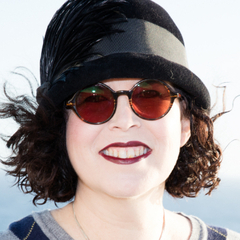 Last reply by kass,
Last reply by kass, -
- 11 replies
- 724 views
I was thinking it would be grande to learn or share and certainly discuss strategy on land and sea as survival required brains and daring as well as might. Especially in the unmatched contests when one vessel chanced upon another. So let us start with some basics - terms. The first of which in tribute to William Red Wake shall be: Enfilade: Which is a land or sea tactic Also known as "Raking Fire" In naval warfare, raking fire is fire directed parallel to the long axis of an enemy ship. Although each shot is directed against a smaller target profile than by shooting broadside and thus more likely to miss the target ship to one side or the other, an individual cannon…
 Last reply by hitman,
Last reply by hitman, -
- 9 replies
- 802 views
I was doing a little flag research and I was curious. Were yellow flags used as a warning for quarantine or sickness in the GAoP?
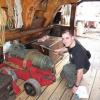 Last reply by Coastie04,
Last reply by Coastie04, -
- 3 replies
- 575 views
I searched for this topic, because I suspect it was been hashed out before. But to my surprise, I couldn't find anything about it. I wonder what sort of weaves available today for wool date back to or replicate techniques of the seventeenth century? As far as I can tell, weaves such as Garbadine appear much too late. Poplin, apparently, dates to the 1400 century, though it was originally made from silk, I guess. Would wool poplin by appropriate for the GAoP? Also, what is the deal with the box weave? I can't find anything about it that doesn't refer to carpets or chainmail, and can't find a date for it.
 Last reply by kass,
Last reply by kass, -
- 4 replies
- 1k views
I have looked all over for an image of an extant sailor's frock or period pictures of a sailor's frock, and all I can find is descriptions that they were like big shirts. Well, that made me wonder what the collar was like. Did they have big collars, short collars, band collars, no collars? And whilst google imaging, I found this: This is a children's sailor suit from 1906, I think. Now compare it to this image: Now, this is not the best image to compare, perhaps, but look at the similarity between the neck openings. Sure, there's only a limited way to put collars, cuffs, and whatnot together, but shirts had already changed by this time, and coats, sweaters, and jack…
 Last reply by Matty Bottles,
Last reply by Matty Bottles, -
- 20 replies
- 1.3k views
I'm sure some of you know about it, but for those who don't... The National Geographic's "Real Pirates" Exhibition is opening soon in Cincinatti, before going on the road and crossing the seas. And as if that wasn't exciting enough, the outfits used in the exhibition were supplied by our very own Reconstructing History!
Last reply by Patrick Hand, -
- 6 replies
- 634 views
Ahoy...all Does anyone have any ideas of book on the subjects or perhaps anyone that presented any articials on the subject matter online,,,, YHS Collin
Last reply by JohnnyTarr,



